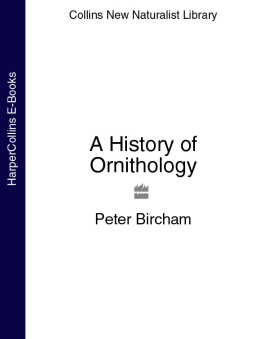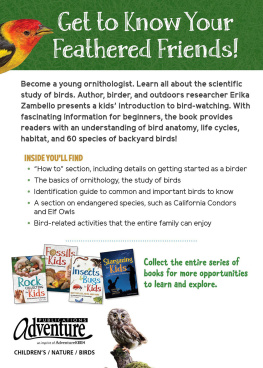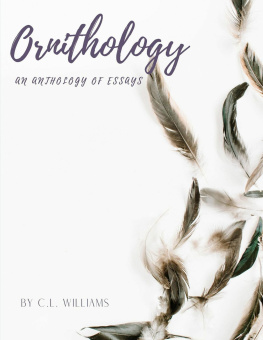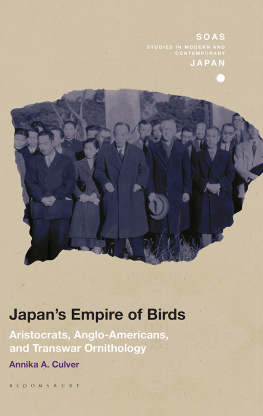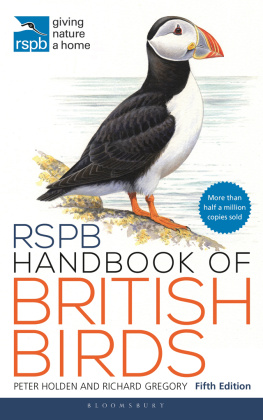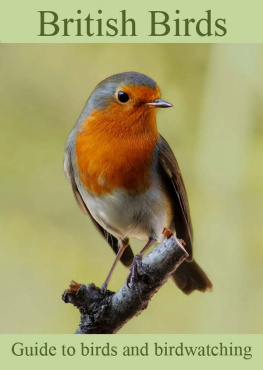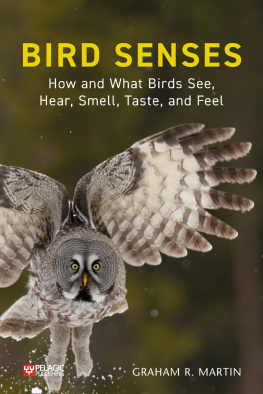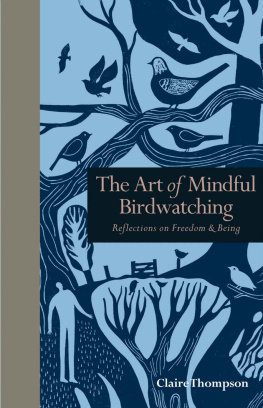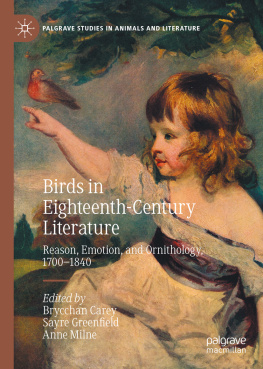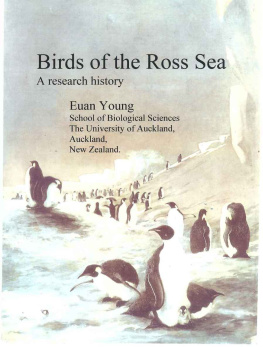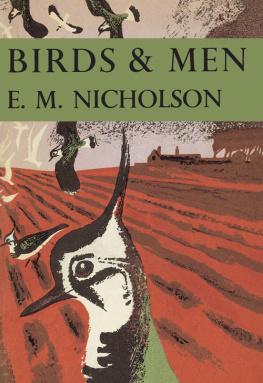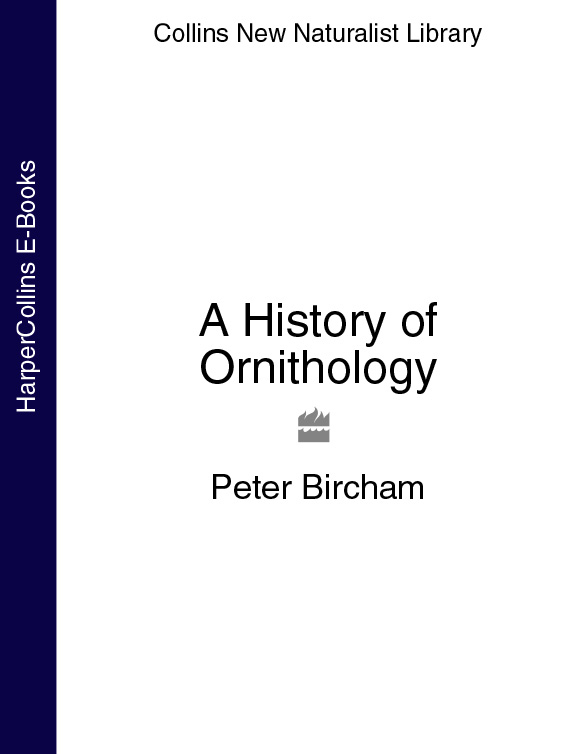SARAH A. CORBET, ScD
PROF. RICHARD WEST, ScD, FRS, FGS
DAVID STREETER, MBE, FIBIOL
JIM FLEGG, OBE, FIHORT
PROF. JONATHAN SILVERTOWN
*
The aim of this series is to interest the general reader in the wildlife of Britain by recapturing the enquiring spirit of the old naturalists. The editors believe that the natural pride of the British public in the native flora and fauna, to which must be added concern for their conservation, is best fostered by maintaining a high standard of accuracy combined with clarity of exposition in presenting the results of modern scientific research.
Contents
Up to the Sixteenth Century
The First Bird Book
The First British List
The Willughby/Ray Ornithology and Other Seventeenth-Century Works
The Systema naturae: Dawn of a New Age
The First Ornithological Ecologists: White, Jenner and Blackwall
Early studies of migration: Legg, Jenner and others
A Dictionary and Two Histories
The Artists and Their Avifaunas
Alfred Newton and the Founding of the British Ornithologists Union
Theories of Classification, the National Collection and the Catalogue of Birds
The Twentieth Century: Winds of Change
Recording the Avifauna of Britain
Migration: the Scientific Studies Begin
Plumage, Cages, Eggs and Shooting: the History of Bird Protection
Behavioural and Ecological Studies
After the War
Post-War Ornithological Research
The British List and Problems with Fraud
New Slants on Old Problems
The British List
T HE VOLUMES OF the New Naturalist library have generally examined particular places, habitats, or groups of species. The naturalists themselves have of course had walk-on parts, but very few of the 103 previous titles have taken as their main theme the people who have studied the wildlife, or the story of how our knowledge of the subject has developed. This addition to the series is different. It sets out to survey the history of ornithology in Britain spanning a millennium, to assess the worth of its components and their place in the grand scheme of things, and then to present the outcome with appropriate balance and in a palatable manner. This is indeed a mammoth task, but it is one that Peter Bircham has accomplished most successfully, producing a cover-to-cover read of continuing interest and fascination from what might be deemed to be the driest of base materials. He has also accomplished the task with style, his enthusiasm for both the underlying researches and the compilation of the text shining through each chapter.
With a background in continuing education, and based in Cambridge, Peter Bircham is well placed to handle the necessarily extensive sifting of both the archival and present-day researches and researchers, and to present the product to great effect. Inevitably, detail from the Middle Ages is scanty, but from the sixteenth century onwards the quantity of material to be sifted grows rapidly. Not only was there more interest in the natural environment and its inhabitants, but much more information was placed on record in one way or another. Then, as now, there were disputes over vernacular names and over taxonomy, with cyclic prevalences of splitters and lumpers, although at a rather more basic level than today. Many readers will be astonished at how little the concerns of the ornithologists have changed, and at how recently some of todays everyday birds were separated one from another.
Through time, the gradual attitudinal shift from hunting and collecting towards conservation is revealed, although sadly this transition has not yet been fully accomplished. Revealed too is the gradual, but now rapidly accelerating, shift from whats hit is history, whats missed is mystery of the stuffed specimen to the technology of field identification of the live bird in the wild, brought about by a combination of observer skills and optical developments which allow feather-by-feather analysis. This, as the reader will discover, is not without intrigue, even dishonesty, along the way.
The pen-pictures of the ornithologists themselves show a gradual progression, from a handful of enthusiasts and scholars in the earliest days, to the mainly wealthy amateurs with ample time for field observation of the eighteenth, nineteenth and early twentieth centuries, then on to not much more than a handful of university academics before the post-1950 burgeoning of both the pursuit of birdwatching and the science of ornithology. The status of the amateur birdwatcher has been raised, first from crank to harmless eccentric, then to an interesting component of the social community, and finally to a respected contributor to a rapidly accumulating amateur/professional science base. The more extreme exertions of todays twitchers, seeking rarities often in far-flung places, may be viewed by some as a return to the eccentricity of old, but none can deny the field skills of those seeking and identifying these vagrants to our shores. And the science of ornithology has grown alongside the skills of the observers, so that by the start of the twenty-first century the study of birds has developed to the point where it can play a key role in fundamental biological investigation.
Peter Bircham skilfully unfolds a kaleidoscopic and highly readable account of ornithological personalities over the centuries, and of the contributions they have made to ornithology in Britain. No reader will be left complacent, nor will they put this book down without having extended their background knowledge, including numerous gems of revelation and surprise. This is a most welcome addition to the New Naturalist library.
A S A TUTOR FOR what is now called the Cambridge University Institute of Continuing Education, I once asked an evening-class group if there was any topic that they would particularly like me to cover in the course probably just called Bird Study in those days. One lady mentioned Gilbert White and said that she would like to know more about the history of ornithology in this country. I was surprised, and with not much enthusiasm I wandered across to the Zoology Department Library, with which I was vaguely familiar.
When I entered the small inner office the librarian, Ron Hughes, a small slim man with a round face and black-rimmed glasses, looked up from a large Victorian desk that was covered with papers, and when I told him I would like to use the library he produced a card for me to fill out. This was followed by a quick induction in his Welsh lilt, and finally he asked if I had any particular interest. When I told him that I was interested in old books about ornithology he directed me to the inner room, where the Newton Library is housed, containing the great collection of Alfred Newton, the first Professor of Zoology in Cambridge. I cant recall Rons exact words, but they were something to the effect that youll find all you need in there, boy. He was not wrong! I had about four weeks to prepare my lecture on the subject, but by the time the evening came I had already realised that there was a whole books worth of material in Newtons papers alone. That was seventeen years ago.
All research leads to more research. This book has led me to more and more sources about the historical aspects of our ornithology. I am perfectly aware that this is a topic where new information will come to light from time to time, so that at whatever point I complete my writing there will be omissions. Furthermore, others may know of published or unpublished sources not mentioned here. In the end there is also the difficult task of choosing which material to include and which material to exclude, and keeping it all to a reasonable number of words. I decided to restrict the book to those things that I consider to be of fundamental importance. For the earlier period this was not difficult, but from the nineteenth century onward I have been forced to jettison some material that others might consider to be just as significant as that which I have included. It boils down to a personal decision. Recently both Stephen Moss and Ian Wallace have produced books that cover much of the ground of the twentieth century (Wallaces contains many interesting personal insights from the post-war period), and I have attempted not to reproduce what they have written, although inevitably there are overlaps.

